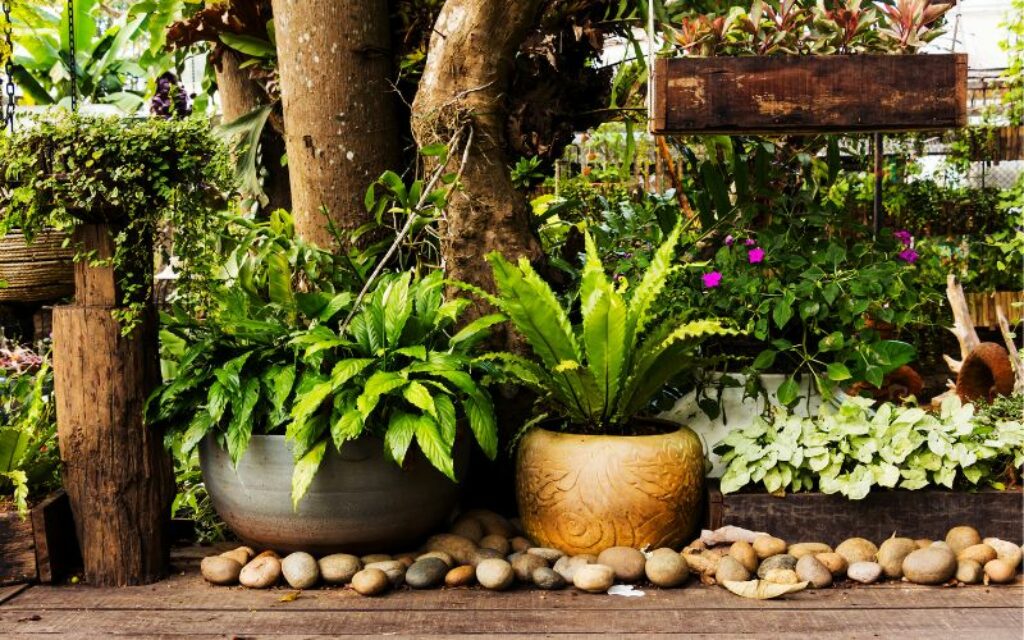If you’re passionate about gardening, you should know the fundamentals that will make your plants thrive. Growing a beautiful garden is both an art and a science – making sure your soil, sunlight, temperature, and watering are adequate for optimum growth takes some learning.
From understanding which fruits and vegetables grow best together to mastering what it takes to have picture-perfect flowers throughout spring and summer, there’s much to learn when it comes to gardening. Take the time to research not only how plants need to be tended but also how they sustain themselves in nature so you can build a successful space year after year.
Here we’ll explore all of these facets of cultivating plants indoors or out in order to create flourishing success!

Choosing the Right Plants
Selecting the ideal plants for your garden can be a daunting task, so it’s always best to do research beforehand. You want to ensure that the plants not only thrive in the conditions of your garden but also complement each other aesthetically.
One plant you might consider adding to your selection is the rarest flower you can find. The exclusivity of this unique beauty will no doubt add a touch of elegance to your garden, elevating it to new heights.
By carefully reviewing the different flowers available and selecting the ones that will work best for your garden, you’ll be able to create a haven that will leave all your neighbors green with envy.
Understand Your Climate and Plant According To It
As we spend more time cultivating our green spaces, it’s becoming increasingly important to understand what types of plants will thrive in our particular climate.
Rather than wasting time and effort on plants that are ill-suited to our area, taking the time to research and identify your climate can help you choose the best plants for your space.
Whether it’s a hot and dry desert climate or a cool and damp temperate area, there are plant species that will flourish with the right care. By matching your plants to your climate, you can enjoy beautiful, healthy greenery year-round.
Preparing the Soil
If you want a thriving garden, it all starts with the soil. Preparing the soil properly is essential for your plants to grow strong and healthy. Good soil needs to be aerated and has enough nutrients to support plant growth. Aeration involves loosening up the soil with a garden fork or tiller, allowing air, water, and nutrients to better penetrate the soil.
Adding compost or other organic matter can provide the necessary nutrients for your plants to thrive. Don’t skimp on this step – taking the time to prepare your soil properly will pay dividends in the long run.
Use Natural Pest Prevention Methods
Gardening is an enjoyable and satisfying pastime, but it can become frustrating when pests begin to destroy your plants. Luckily, there are natural pest prevention methods that can keep your garden flourishing without the use of harmful chemicals.
Companion planting is a great way to deter pests by planting certain plants next to each other that repel them. Additionally, creating barriers like nets or row covers can prevent pests from getting to your plants in the first place.
Lastly, introducing natural predators like ladybugs or praying mantises can help keep pest populations under control. By utilizing these natural methods, you can protect your plants while also protecting the environment.
Also Read: 6 Usual Home Pests Suspects and Simple Ways to Get Rid of Them
Watering Properly
Watering your plants properly is key to their growth and overall health. Understanding the specific watering schedule for each plant will help to ensure that they receive the right amount of water at the right times. For example, succulents require infrequent watering, while ferns need consistent moisture.
It’s important to pay attention to the type of soil and the amount of sunlight each plant receives as these factors can affect their watering needs. Knowing when to water your plants will not only help them thrive, but will also save you time, money, and effort in terms of replacing dead plants. So, take the time to research and get familiar with watering schedules to create a beautiful and healthy indoor or outdoor garden.
Mulching for Weed Control
Looking for an easy and effective way to keep weeds under control in your garden? Look no further than mulch! By spreading a layer of mulch over your soil, you can create a barrier that prevents weeds from taking root and sprouting up.
Not only does mulch act as a natural weed killer, but it also helps to improve soil quality by retaining moisture and adding nutrients back into the ground. And with a variety of mulch types available, from wood chips to straw to shredded leaves, you’re sure to find an option that fits both your needs and your personal style.
So why not give mulching a try and see the benefits for yourself? Your garden (and your back) will thank you!
Also Read: Why Every Homeowner Needs a Tarp: Benefits and Practical Uses
Final Words
Gardening is a rewarding experience, however, it does require knowledge and hard work to maintain. Educating yourself on the basics can give you a huge head start toward achieving your gardening goals.
By understanding your climate and planting appropriately, preparing the soil properly, choosing the right plants for your garden, using natural pest prevention methods, watering correctly, and mulching around your garden effectively, you have taken huge strides in ensuring your garden has the potential to be beautiful and bountiful. With a little effort and dedication, you can be an expert gardener in no time!